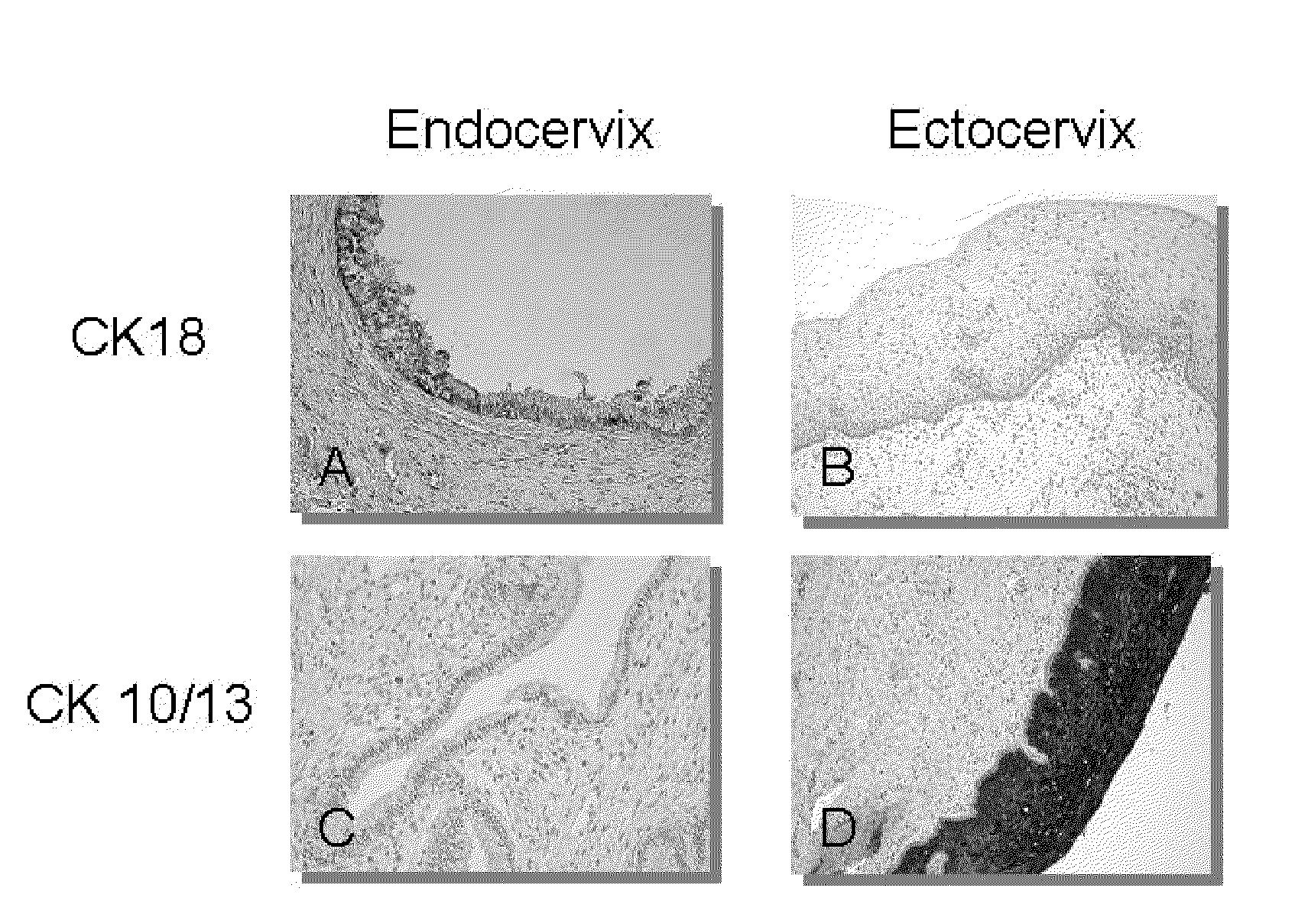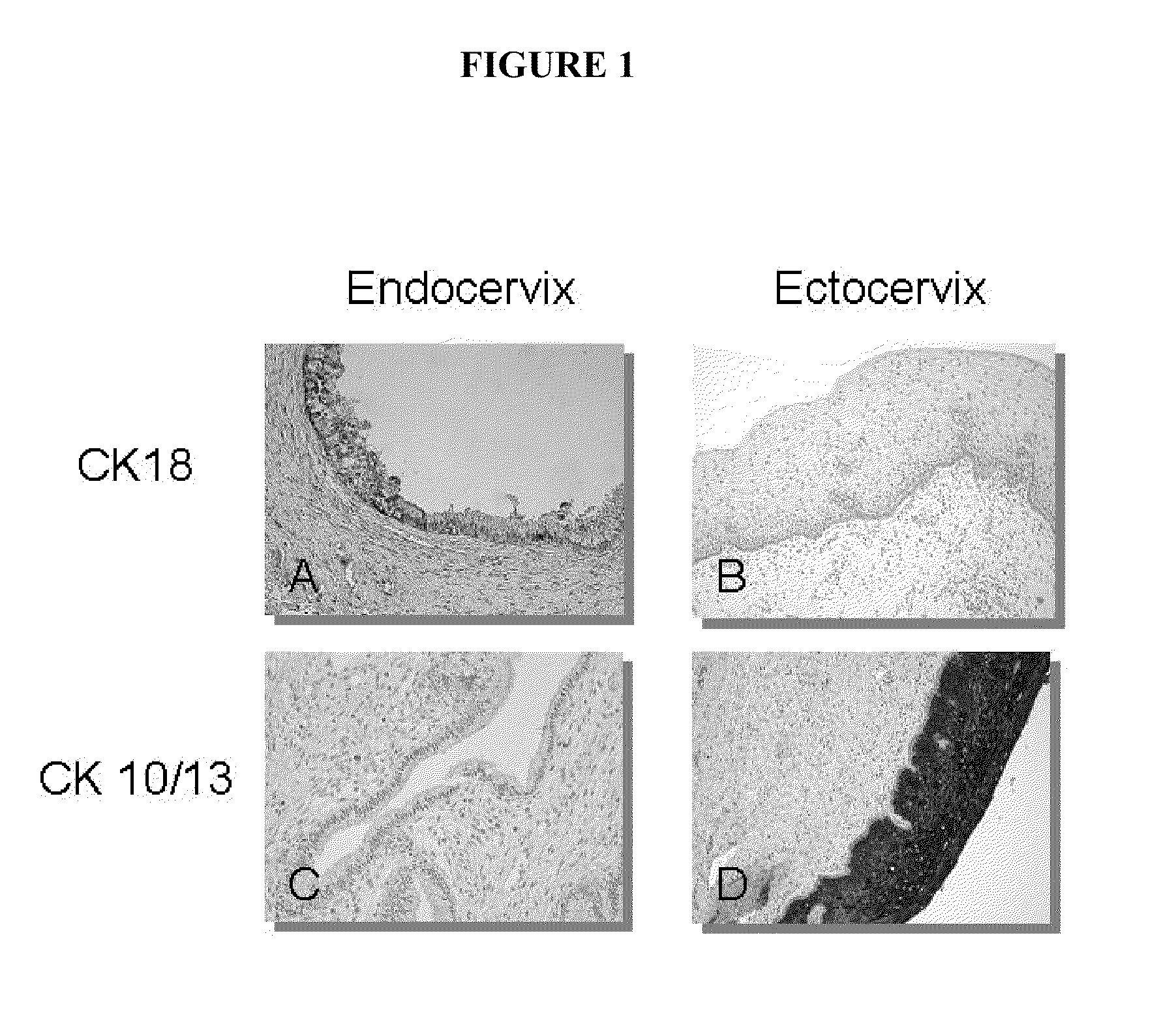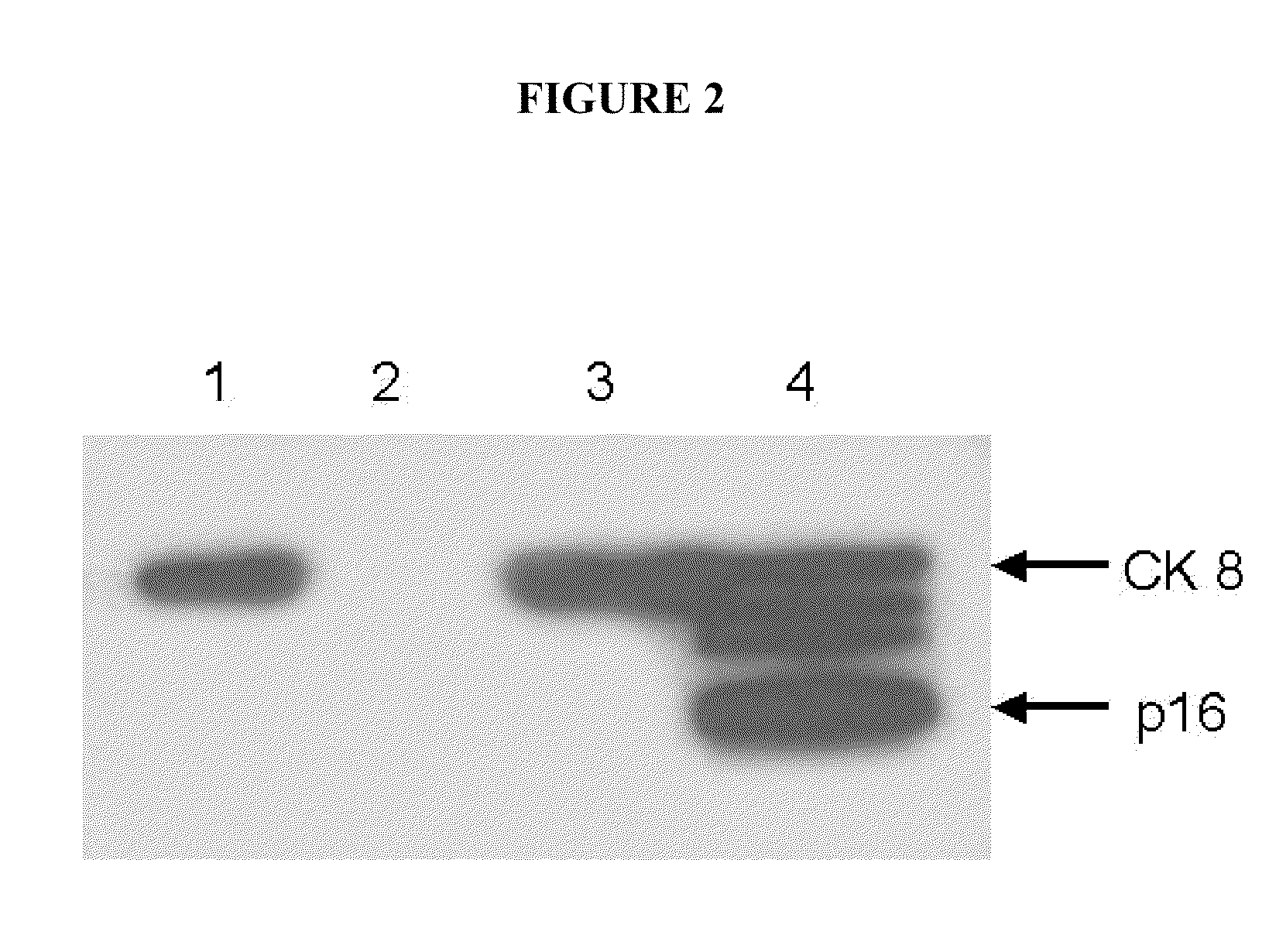Kits for detecting cervical dysplasia
a cervical dysplasia and kit technology, applied in the field of kits for detecting cervical dysplasia, can solve the problems of high inter- and intra-observer variance, high rate of false positive and false negative results in screening tests, and laborious and time-consuming morphologic examination, and thus expensiv
- Summary
- Abstract
- Description
- Claims
- Application Information
AI Technical Summary
Benefits of technology
Problems solved by technology
Method used
Image
Examples
example 1
Specific Immunohistochemical Detection of Endocervical and Ectocervical Epithelial Cells in Cervical Sections
[0100]In order to evaluate markers indicating the adequacy of cervical swabs, cervical sections (fixed in 4% formaldehyde solution and paraffin-embedded) were stained with antibodies directed against Cytokeratin 18 (marker for endocervical columnar epithelia) and Cytokeratin 10 / 13 (marker for ectocervical squamous epithelia). FIG. 1 shows specific staining of endocervical epithelia with anti-Cytokeratin 18 antibody and specific staining of ectocervical epithelia with anti-Cytokeratin 10 / 13 antibody. The experiment was performed as follows:
[0101]Formalin-fixed, paraffin-embedded sections were deparaffinized in xylene bath for 5 min (step was repeated once), excess liquid was tapped off and slides were placed in 95-96% ethanol for 3 (±1) min, in 70% ethanol for 3 (±1) min (step was repeated once) and finally in distilled water for a minimum of 30 sec. For epitope retrieval, sli...
example 2
Western Blot Analysis of Solubilized Samples from Cervical Swabs
[0103]In order to evaluate, whether western blot analysis of solubilized samples allows assessing diagnosis of cervical lesions, clinical samples with known diagnosis were subjected to an immuno-chemical analysis on the basis of marker molecules after lysis of the sample material.
[0104]The clinical material (cervical swabs) samples were analyzed by Standard Western Analysis as follows.
[0105]In brief, the clinical material was in a first step solubilzed by boiling (5 min, 95° C.) in Lämmli Protein Sample buffer (100 mM Tris pH.6.8, 2% SDS, 200 mM DTT, 0.05% BpB) prior to sonification. In a second step, protein samples were resolved on a SDS-PAGE (12% Acrylamide) and subsequently transferred on a nitrocellulose membrane by tank blotting (Towbin et al., 1979, Proc Natl Acad Sci: 76:4350-4354). In a further step, the membranes were: blocked to prevent unspecific antibody binding (10% non fat dry milk in PBS) and subsequentl...
example 3
Western Blot and ELISA Analysis to Demonstrate Sample Adequacy
[0108]To evaluate, whether results of solution based analysis differing from diagnosis of samples may be due to inadequacy of sample, Western blot analysis of cervical swabs of four different patients with ascertained diagnosis (high-grade cervical intraepithelial neoplasia according to the cytological diagnosis of Pap IVa and Pap IVb) was performed. Antibody against p16INK4a was used to indicate presence of dysplastic cells, whereas antibodies against CK18 and CK10 / 13 were used to demonstrate adequacy of the sample.
[0109]Western blot analysis was performed as follows: Patient samples were collected with a cervical brush and directly lysed in Laemmli Sample Buffer (2% SDS, 60 mM Tris pH.6.8, 0.01%, 100 mM DTT) for 5 min at 95° C. (1×107 cells / ml) with subsequent sonification (5×5 sec pulses, maximum intensity). Lysates were centrifuged for 12 min at 16,600×g) in a microcentrifuge and supernatant was transferred into a new...
PUM
| Property | Measurement | Unit |
|---|---|---|
| concentrations | aaaaa | aaaaa |
| concentrations | aaaaa | aaaaa |
| concentrations | aaaaa | aaaaa |
Abstract
Description
Claims
Application Information
 Login to View More
Login to View More - R&D
- Intellectual Property
- Life Sciences
- Materials
- Tech Scout
- Unparalleled Data Quality
- Higher Quality Content
- 60% Fewer Hallucinations
Browse by: Latest US Patents, China's latest patents, Technical Efficacy Thesaurus, Application Domain, Technology Topic, Popular Technical Reports.
© 2025 PatSnap. All rights reserved.Legal|Privacy policy|Modern Slavery Act Transparency Statement|Sitemap|About US| Contact US: help@patsnap.com



